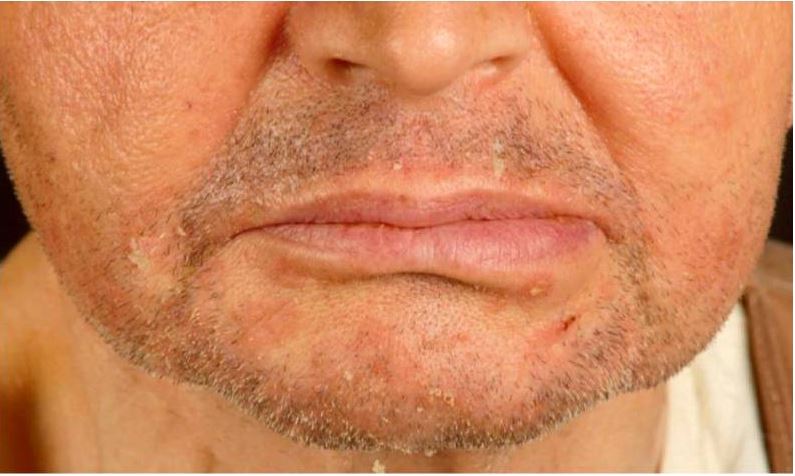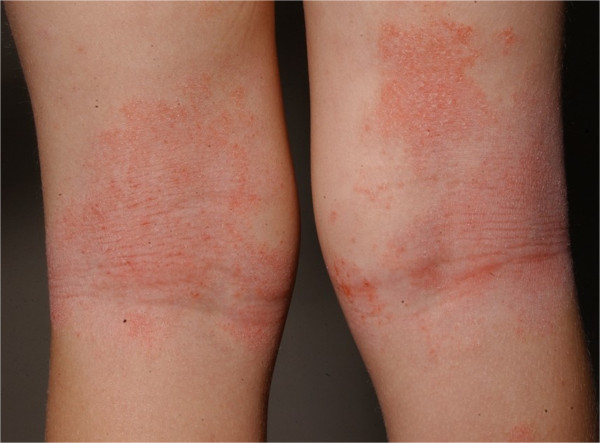Playlist
Show Playlist
Hide Playlist
Quick Review: Dermatitis
-
Slides Atopic Contact and Seborrheic Dermatitis.pdf
-
Reference List Dermatology.pdf
-
Download Lecture Overview
00:02 So what we'll do now is do a couple of review questions, and feel free to pause after any of the questions that I ask to give yourself some time to reflect on the answer. Let's jump in. 00:11 So, which of the following 5 items is true? Item number 1, poison ivy dermatitis is a type of allergic contact dermatitis. Well, that sounds true. So, let's just go through the other ones to make sure we're not missing something. Number 2, irritant contact dermatitis nearly always presents acutely. 00:39 As we've discussed, we know that irritant contact dermatitis can present either acutely or chronically, so that's not correct. 00:46 Number 3, the first step in treating allergic contact dermatitis is high-potency topical glucocorticoids. 00:54 Well, really the first step is to just take away the offending agent. 00:57 Whatever is causing the allergic contact dermatitis should be removed, and then things may just improve on their own, so that's not correct. 01:04 Number 4, irritant contact dermatitis is usually associated with an atopic history. Instead, it's allergic contact dermatitis might be associated with an atopic history, and certainly atopic dermatitis would be, so that one's not correct. 01:18 And then number 5, allergic contact dermatitis is a type 1 hypersensitivity reaction. 01:24 And that's also not true. It's a type 4 hypersensitivity reaction. 01:28 So, we're left with our first instinct, which was item number 1. 01:32 Poison ivy dermatitis is a type of allergic contact dermatitis. 01:37 Let's move on to the next question. What is the "illness script" for atopic dermatitis? And the term "illness script" is used to describe a typical pattern you might see on the boards that should prime you're thinking about this condition. 01:56 So, as we've seen in the case that we've reviewed already today, the typical illness script for atopic dermatitis would be a child with an "atopic" family history, presenting with a persistent, intensely pruritic rash in the antecubital fossae of both arms, characterized by symmetric, dry, lichenified, erythematous plaques with scattered papules and likely to have excoriations, as well. 02:22 Last question, which of the following is true of seborrheic dermatitis? So, going through each of these items, one at a time, number 1, it only occurs in infants. Well, as we've discussed, it also occurs in elderly patients, so that's not correct. 02:44 Number 2, preferentially involves the palms and soles. 02:48 Well, we know that seborrheic dermatitis most commonly affects the face: the eyebrows, behind the ears, maybe in the axilla, but not the palms and soles, so that's incorrect. 02:58 Number 3, it is intensely pruritic. That would be a classic feature of atopic dermatitis, but seborrheic dermatitis is very mildly itchy, if at all. 03:08 4, it's best treated with selenium sulfide or azole shampoos. 03:12 And that's correct. We know that strangely, seborrheic dermatitis is associated with malassezia forfor. Even though we're not entirely clear what the etiology is, we do know that it does respond to these atypical or antifungal agents. 03:27 And lastly, it is less common in patients with HIV. 03:31 In fact, we know it's more common in patients with HIV, and can be quite a good deal worse. So, with that, we've come to the end of our discussion today.
About the Lecture
The lecture Quick Review: Dermatitis by Stephen Holt, MD, MS is from the course Allergic and Immune-mediated Skin Disorders.
Included Quiz Questions
Which of the following statements is true?
- The first step in treating allergic contact dermatitis is to avoid the offending agent.
- Irritant contact dermatitis is typically associated with exposure to nickel.
- Diaper dermatitis is an example of allergic contact dermatitis.
- Seborrheic dermatitis is caused by a nonimmune drug reaction.
- Seborrheic dermatitis is less common in patients with HIV.
Which of the following is true regarding the clinical presentation of dermatitis?
- Atopic dermatitis presents with dry, lichenified, erythematous plaques and scattered excoriations.
- Allergic contact dermatitis presents with plaques with silvery scales on erythematous beds.
- Seborrheic dermatitis presents with scattered erythematous papules, vesicles, and bullae.
- Psoriasis presents with scaly, flaky, greasy-looking lesions on the face.
Customer reviews
5,0 of 5 stars
| 5 Stars |
|
5 |
| 4 Stars |
|
0 |
| 3 Stars |
|
0 |
| 2 Stars |
|
0 |
| 1 Star |
|
0 |






